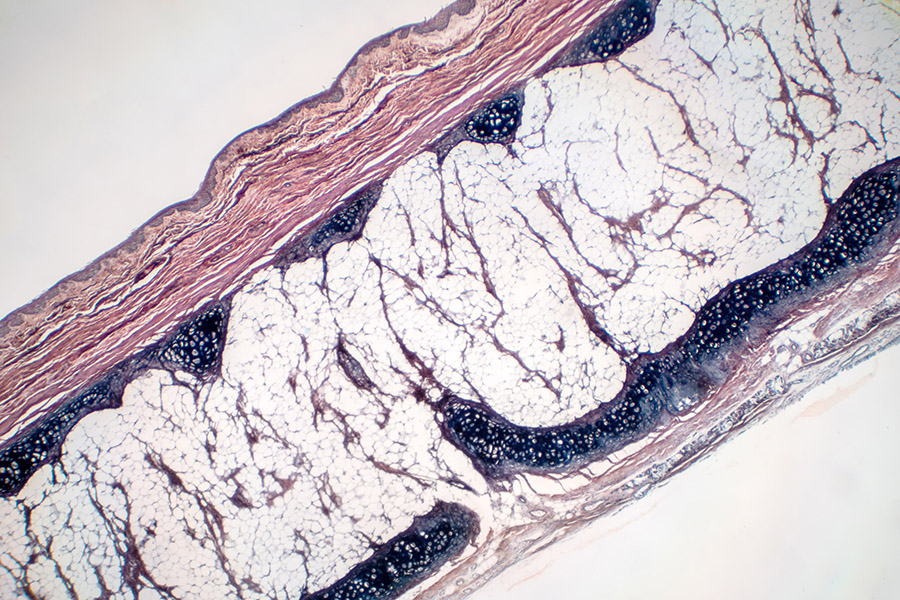
Click the video above
to watch our show
Plantar Fasciitis
Plantar fasciitis can be considered an overuse injury, developing due to overuse and too much stress on the feet. Home care treatments can help reduce symptoms and clear up the condition, such as with over-the-counter medication, icing, rest, and stretching the affected foot.
If suffering from plantar fasciitis or have sore feet in the morning when getting out of bed, listen to Howard Barker, MD as he explains the foot condition plantar fasciitis and the 4 steps you can perform to treat this condition.
What is Plantar Fasciitis?
Plantar fasciitis is when inflammation occurs in the plantar fascia, a strong and fibrous attachment that runs from the heel to the ball of the foot and toes. Like a ligament, it’s a thick and rubbery band that stretches, connecting the bones in the foot together and forming the arch at the bottom of the foot.
When the plantar fasciitis is stretched too far or is overused, it can swell and become damaged, which makes walking or using the foot painful. The condition is very common and while it usually affects one foot at a time, it isn’t unusual for it to develop in both feet simultaneously.
Plantar Fasciitis Causes
Anything that irritates or damages the plantar fascia can result in plantar fasciitis, but some specific actions and conditions are more likely to be plantar fasciitis causes than others, including:
- playing sports
- being on your feet nearly the entire workday
- exercising or working on a hard surface
- wearing shoes that don’t support the feet well, such as flip-flops
- walking or standing barefoot while at home
- high arch feet
- flat feet
- Obesity
Symptoms of Plantar Fasciitis
Plantar fasciitis is the most common cause of heel pain, but the type of pain that develops in the feet or along the bottom of the foot is often a tell-tale sign, especially if the pain changes depending on the activity or time of the day. The pain felt in the foot or heel includes:
- a dull, constant ache
- a temporary pain when standing up after sleeping or sitting down
- sharp or stabbing pain when pressure is put on the affected foot or heel
- increased pain in the morning or when standing after sitting or sleeping
Beyond heel or foot pain, plantar fasciitis symptoms include:
- swelling around the hell
- stiffness
- a tight Achilles tendon
Diagnosis & Treatment
Diagnosing plantar fasciitis requires a physical exam and discussing the symptoms with a healthcare provider. The exam typically includes the doctor lightly pressing on the plantar fascia to feel for inflammation and assess the level of pain. It’s important to describe the level of pain felt during daily routines, where the pain is felt, and where it’s most painful during the day when discussing symptoms. To confirm the diagnosis, a doctor may order imaging tests like an MRI, an ultrasound, or an X-ray.
Treatment is usually done at home and with over-the-counter medicine, though a patient’s doctor may recommend specific actions to reduce the risk of developing plantar fasciitis again. Typical plantar fasciitis treatments include:
- Immobilization by way of wearing a walking boot for a few weeks.
- Seeing a physical therapist to learn stretches and massages
- Injecting corticosteroids to relieve inflammation
- Extracorporeal pulse activation technology, or EPAT, is a form of shockwave therapy to increase blood flow to the plantar fascia.
- Percutaneous needle tenotomy, forces the body to send more blood to the area and stimulate faster repair.
- Icing the affected foot for 10 to 15 minutes, twice a day
- Wearing supportive shoes that are sturdy and well-cushioned
- Shoe inserts for extra arch support
- Resting from sports or specific activities
- Over-the-counter NSAIDs, such as aspirin, ibuprofen, and naproxen
In rare cases, plantar fasciitis may require surgery to relieve symptoms and be treated successfully. Two types of surgeries can be recommended:
- Gastrocnemius recession: the surgeon will lengthen the calf muscles to reduce pressure on the plantar fascia
- Plantar fascial release: a tiny incision is made in the plantar fascia to relieve some of the extra tension.
Featured Orthopedic Surgeon(s)
- Foot and Ankle Orthopedic Surgery
- Knee Orthopedic Surgery
- Shoulder Orthopedic Surgery
- Sports Medicine
- Knee/Foot/Ankle
























